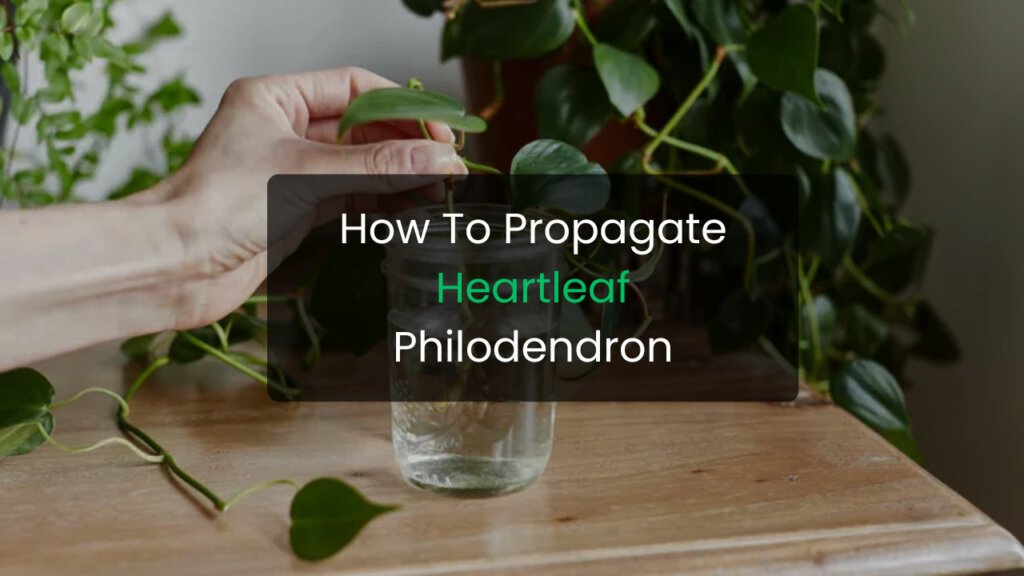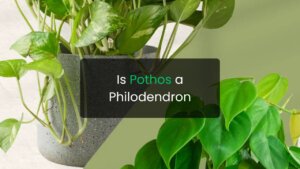Heartleaf philodendron, scientifically known as Philodendron hederaceum, is one of the most popular indoor plants due to its trailing vines, hardy nature, and fast growth. The good news is that you can easily propagate it at home to make new plants for yourself or share with friends. This guide covers simple and effective ways to multiply your heartleaf philodendron using stem cuttings in soil or water.
Why Propagate a Heartleaf Philodendron
Propagation helps you:
- Grow new plants for free
- Rejuvenate an older plant with leggy growth
- Fill out your existing pot for a fuller look
- Share plants with friends and family
Best Time to Propagate
The best time to propagate your philodendron is during spring or summer when the plant is actively growing. During this period, roots develop faster and cuttings adapt quickly.
What You Need
- Clean scissors or pruning shears
- A glass jar or small pot
- Fresh water or potting mix
- Optional rooting hormone
- Healthy heartleaf philodendron vines with nodes
Step by Step Guide to Propagate in Water
Water propagation is simple and lets you monitor root growth.
- Select a healthy vine with at least one node and one leaf.
- Use clean shears to cut just below the node. The node is where roots will grow.
- Remove any leaves near the node so they do not sit in water.
- Place the cutting in a jar of clean water, making sure the node is submerged.
- Keep it in bright, indirect sunlight.
- Change water every week to keep it fresh and prevent bacterial growth.
- Wait two to four weeks for roots to grow about two inches long before transferring into soil.
Step by Step Guide to Propagate in Soil
Soil propagation creates a stronger start for new plants.
- Prepare a small pot with well draining potting mix.
- Make a cutting below a node as explained above.
- Dip the cut end in rooting hormone if you want faster rooting.
- Place the stem cutting in moist soil, making sure the node goes under the surface.
- Keep soil lightly moist but not soggy.
- Place pot in bright, indirect light.
- New growth usually appears in three to six weeks as roots establish.
Care Tips After Propagation
- Keep new cuttings away from direct harsh sunlight
- Maintain light moisture but avoid overwatering
- Use filtered or room temperature water
- Provide warm temperature and good humidity
- Once established, feed with a gentle liquid fertilizer
Common Issues and Solutions
| Issue | Cause | Fix |
|---|---|---|
| Leaves turning yellow | Overwatering or poor light | Reduce watering, move to bright indirect light |
| Roots not forming | Cold environment or low light | Place in warmer spot with bright filtered light |
| Cutting rotting in water | Dirty water | Change water weekly and use clean container |
Related Entities and Keywords
Heartleaf philodendron, Philodendron hederaceum, pothos vs philodendron, indoor houseplants, tropical plants, soil mix, rooting hormone, stem cuttings, nodes, water propagation, aroid plant family, vine plant care
FAQs
How long does heartleaf philodendron take to root?
Cuttings usually begin rooting within one to four weeks depending on environment.
Can all philodendron types be propagated the same way?
Most climbing philodendrons, including heartleaf philodendron, respond well to stem cutting propagation. Self heading types may require different methods like division.
Can I leave philodendron cuttings in water forever?
Yes, they can live in water long term, but soil enhances growth and provides stronger roots.
Do I need rooting hormone?
It is optional. Heartleaf philodendron roots naturally, but rooting hormone can speed up the process.
Why are my cuttings turning mushy?
This happens due to bacteria or too much water. Use clean tools and refresh water regularly or improve soil drainage.





